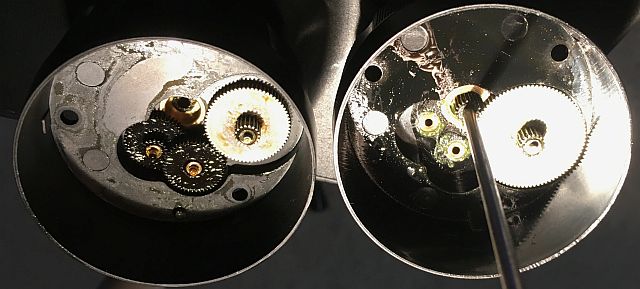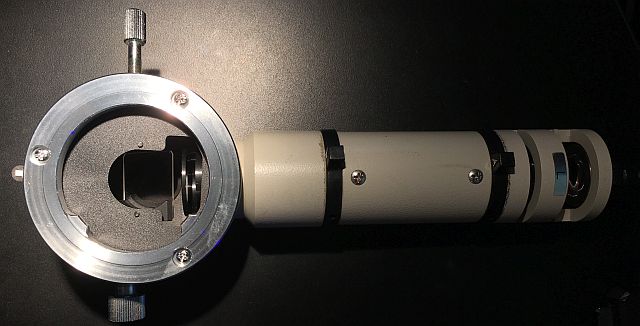Compared to accustomed AO 180 oculars, am pleased by CFWN 10x20 view,
first impression was that one could almost fall in...
I had read that, unlike model F head, the T is not straight-thru in nominal photo position,
but was surprised that it has optics with magnification similar to that of my eyeglasses for far vision.
This suggests that magnification will not simply be the product of objective and CF PL2.5X ratings..
I would have expected that a camera would be able to "see" the window grille thru the trinocular port.

Nikon CF objectives are reputed to not require further correction;
(1) what purpose does the model T head bottom lens serve?
The vertical illuminator lacks both Analyzer A and polarizing alternative to neutral density slider;
instructions PDF drawing of "Polarizing means" is too vague for me to identify
(2) does someone 3D-print replacement sliders?
A happy discovery:
PVC reducer from 2 inch o.d. to 1.5 inch i.d. has 42mm o.d that precisely fits the trinocular chimney
and 48mm i.d. that nicely fits an otherwise useless (to me) Pentax K/M to M42 adapter that will be epoxied in place;
an EOS to M42 adapter has yet to arrive.




